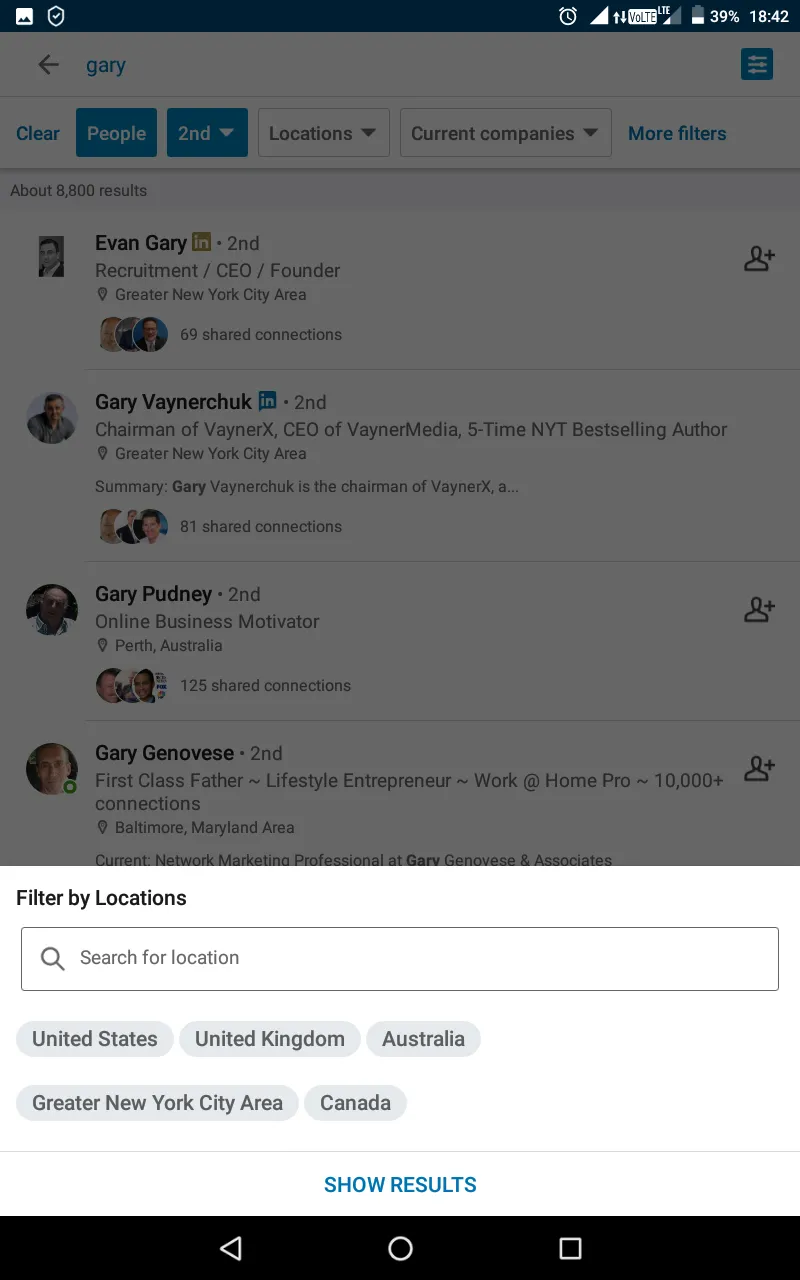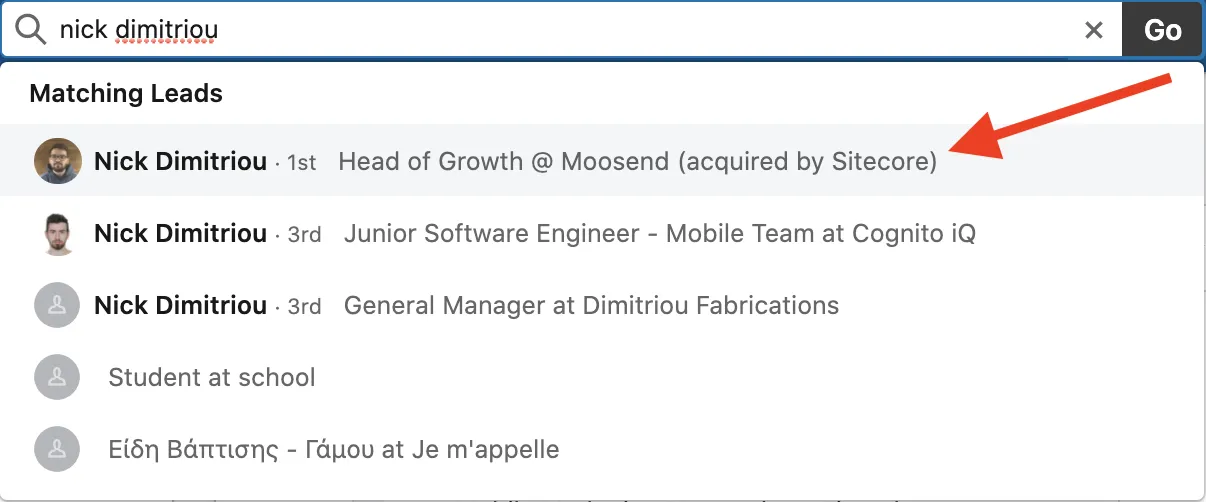Finding the right person on LinkedIn can feel like searching for a needle in a haystack, especially with millions of profiles out there. But don’t worry! With the right techniques, you can streamline your search and connect with professionals in your field. This guide will walk you through effective searching techniques that can help you locate anyone, from potential collaborators to industry leaders. Let’s dive in!
Understanding LinkedIn's Search Functionality

LinkedIn's search functionality is a powerful tool that can help you navigate through its vast network of professionals. By understanding how to utilize this feature effectively, you can save time and find the right connections more easily. Here’s a breakdown of how LinkedIn's search works:
- Basic Search: At the top of your LinkedIn homepage, you’ll see a search bar. You can enter keywords like names, job titles, or companies here. The results will include profiles, jobs, companies, and more.
- Filters: After performing a basic search, you can refine your results using filters. LinkedIn allows you to filter by location, current company, past company, industry, and more. This helps narrow down your search significantly.
- Boolean Search: Want to get more advanced? Use Boolean operators to enhance your search. You can use AND, OR, and NOT to combine keywords. For example, searching for "Marketing AND Manager" will give you profiles that include both terms.
- Search by Connections: If you’re looking for someone specific, check mutual connections. This can be a great way to get introductions or referrals.
- Saved Searches: If you often search for similar types of profiles, consider saving your searches. This way, you can quickly access your preferred results without starting from scratch each time.
By mastering these functionalities, you can enhance your LinkedIn search experience, making it much easier to find the people you need in your professional network!
Also Read This: Download Canva Templates to Google Slides Easily
Using Filters to Narrow Your Search

Searching for someone on LinkedIn can sometimes feel like looking for a needle in a haystack, especially if you’re not using the right tools. Thankfully, LinkedIn offers a variety of filters that can help you narrow down your search, making it easier to find the exact person you’re looking for.
First off, let’s talk about the basics. When you enter a name in the search bar, LinkedIn will give you a plethora of results. But instead of scrolling endlessly, you can utilize the filter options available on the search results page. Here are some key filters you might consider:
- Location: This is particularly useful if you're looking for someone in a specific city or country.
- Current Company: If you know where the person works, this filter can greatly cut down the number of results.
- Industry: Filtering by industry helps you find professionals in specific fields, like healthcare or technology.
- Connections: You can filter results based on your connection level, such as 1st, 2nd, or 3rd-degree connections.
- School: If you’re searching for an old classmate or colleague, filtering by school can be a game-changer.
Using these filters strategically can help you hone in on the right profiles quickly. Remember, the more specific you are with your filters, the better your chances of finding that elusive connection!
Also Read This: Canva Image Curving
Utilizing Keywords for Better Results

When it comes to searching for someone on LinkedIn, the power of keywords cannot be overstated. Just like a search engine, LinkedIn uses keywords to pull up relevant profiles, so knowing how to use them effectively can significantly enhance your search results.
Start by identifying the most relevant keywords that describe the person you’re looking for. This could include their name, job title, skills, or even the company they work for. Here’s how you can make the most of keywords:
- Full Names: If you know the full name of the person, include it in quotation marks (e.g., "John Doe") for a more precise search.
- Job Titles: Including specific job titles can help you locate someone in a particular role, such as “Marketing Manager” or “Software Engineer.”
- Skills: LinkedIn profiles often highlight skills. If you know a specific skill the person has, include it in your search. For example, "Project Management."
- Company Names: If they work or worked at a specific company, add that to your search to filter results.
Additionally, don’t forget to mix and match these keywords. Using different combinations can sometimes yield better results. Remember, the more thoughtfully you approach your keyword strategy, the more likely you are to find the right individual!
Also Read This: How to Download Comps from Adobe Stock Quickly and Easily
Searching by Location
When you're on the hunt for someone specific on LinkedIn, one of the most powerful tools at your disposal is the ability to search by location. This feature allows you to narrow down your search results to a specific geographical area, making it easier to find local professionals or those based in a particular city or country.
Here’s how you can effectively utilize location-based searching:
- Use the Search Bar: Start by entering the name of the person you’re looking for in the search bar. After the initial search, you can refine your results.
- Filter by Location: On the left side of the search results page, you’ll see various filters. Click on “Locations” to specify the area you’re interested in. You can search by city, state, or even country.
- Be Specific: If you know the exact city or region, type that in. For example, instead of just “New York,” you could enter “Brooklyn, New York” for more precise results.
Using geographic filters not only helps in pinpointing the right person but also opens up opportunities to connect with professionals in your vicinity. Whether you’re looking for job opportunities, networking, or collaboration, searching by location can significantly enhance your chances of finding the right contacts.
Also Read This: How to Unlock Bakugo in My Hero Ultra Rumble
Exploring Connections and Mutual Contacts
Once you’ve identified a potential connection on LinkedIn, exploring their connections and mutual contacts can uncover even more networking opportunities. This strategy is particularly useful if you’re trying to expand your professional network in a specific industry or area.
Here are some tips for effectively exploring connections and mutual contacts:
- Check Mutual Connections: When you view someone’s profile, LinkedIn often shows you mutual connections. This can be a great way to see if you share any contacts, which can make it easier to reach out.
- Follow the Connection Path: If you see a mutual contact that you know well, consider asking them to introduce you. This warm introduction can significantly increase the chances of a positive response.
- Explore Their Connections: Take a look at who else they’re connected to. This can lead you to other relevant professionals in your field that you might want to connect with.
- Join Common Groups: If you notice that you share a common group with a potential connection, consider joining that group. Engaging in group discussions can provide additional context and common ground for reaching out.
By actively exploring connections and mutual contacts, you not only broaden your network but also enhance your visibility within your professional community. This strategy can open doors to new opportunities, collaborations, and insights into your industry!
Also Read This: Canceling Payment in Depositphotos Account: How-To
7. Leveraging LinkedIn Groups for Networking
LinkedIn Groups can be a goldmine for networking and finding people who share your interests or professional goals. Think of groups as mini-communities where members come together to discuss specific topics, share resources, and connect with one another. By leveraging these groups, you can not only find potential connections but also establish yourself as a valuable member of the community.
Here are some tips on how to effectively use LinkedIn Groups for networking:
- Join Relevant Groups: Start by searching for groups that align with your industry, interests, or the skills you want to develop. Use keywords that resonate with your professional aspirations to find the best fits.
- Participate Actively: Once you’re a member, don’t just lurk. Engage in discussions, share your insights, and respond to others’ posts. This helps you build visibility and credibility among group members.
- Connect with Members: After establishing rapport through discussions, don’t hesitate to send connection requests to members you resonate with. Personalize your message to remind them of your interaction in the group.
- Use Group Features: Explore features like polls, events, and announcements. These can be great opportunities to connect with others who share your interests.
Remember, the goal is to build genuine relationships. Networking through LinkedIn Groups can open up new opportunities, collaborations, and friendships that extend beyond the platform!
Also Read This: How to Burn YouTube Videos to DVD for Saving Your Favorite Content
8. Advanced Search Techniques
If you’re really serious about finding someone on LinkedIn, mastering advanced search techniques can make a world of difference. LinkedIn offers a variety of filters and Boolean search capabilities that can help you narrow down your results to find exactly who you’re looking for.
Here are some advanced search techniques to consider:
- Use Boolean Operators: Incorporate operators like AND, OR, and NOT to refine your search. For example, searching for "marketing AND manager" will yield results that include both terms.
- Utilize Quotation Marks: If you’re looking for an exact phrase, put it in quotation marks. Searching for "software engineer" will return results that specifically include that exact title.
- Filter by Location: You can specify geographic locations to find people in certain areas. This is especially useful if you’re looking to connect with local professionals.
- Leverage Industry Filters: LinkedIn allows you to filter your search by industry. This can help you find professionals who are specifically in your field.
By combining these techniques, you can create a highly targeted search that increases your chances of finding the right person. Whether you’re looking for a mentor, a collaborator, or simply someone with shared professional interests, these advanced search tips can streamline your LinkedIn experience and lead you to valuable connections!
How to Find Someone on LinkedIn Using Effective Searching Techniques
LinkedIn is a powerful professional networking platform that allows you to connect with industry experts, colleagues, and potential employers. However, finding someone specific can sometimes be challenging. Here are some effective searching techniques to help you locate individuals on LinkedIn:
- Use Advanced Search Filters: LinkedIn offers several filters to refine your search, including:
- Name: Enter the person's full name.
- Location: Specify the city or region.
- Current Company: Include the name of the company they work for.
- Industry: Narrow down your search by selecting the industry.
- Search by Keywords: Include relevant keywords in your search query that may relate to the person's job title, skills, or interests.
- Utilize Boolean Searches: Enhance your search with Boolean operators:
- AND: Use this to combine terms (e.g., "marketing AND sales").
- OR: Use this to include either term (e.g., "software OR developer").
- NOT: Use this to exclude terms (e.g., "engineer NOT junior").
- Check Mutual Connections: If you have mutual connections, look through their profiles to find the person you are searching for.
- Use LinkedIn Groups: Join industry-specific groups where the individual may be a member and search for them within the group.
By implementing these techniques, you can enhance your LinkedIn search efficiency and connect with the right professionals. Don't forget to personalize your connection requests to increase your chances of a positive response!
Conclusion: Effective searching techniques on LinkedIn can significantly streamline your efforts in finding the right individuals, making networking more accessible and productive.